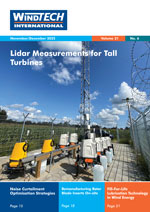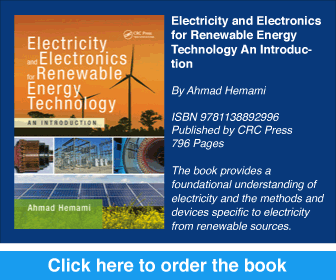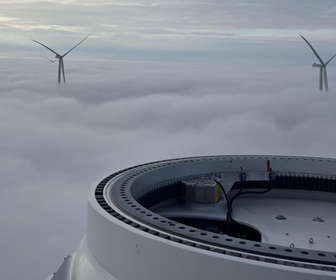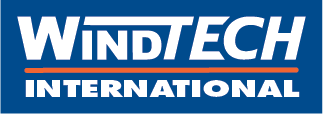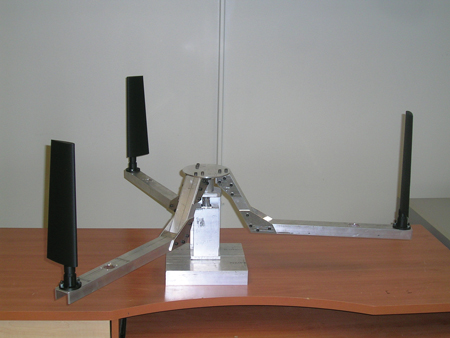 Going back 50 to 55 years, when more attention was focused on wind energy, both vertical axis and horizontal axis turbines were made and their practical potential for large-scale commercial energy production evaluated. The winner came out to be the horizontal axis propeller type wind turbine. At the time, parallel with extensive research on the propeller turbine, many Darrieus turbines were built at both research and commercial scale. The largest was 96 metres in height and 64 metres in diameter and it was in operation for 5 years before it stopped working due to damage in the gearbox, which was too expensive to repair. A great number of smaller units were also commercially built and operated (especially in California) in the 1980s.
Going back 50 to 55 years, when more attention was focused on wind energy, both vertical axis and horizontal axis turbines were made and their practical potential for large-scale commercial energy production evaluated. The winner came out to be the horizontal axis propeller type wind turbine. At the time, parallel with extensive research on the propeller turbine, many Darrieus turbines were built at both research and commercial scale. The largest was 96 metres in height and 64 metres in diameter and it was in operation for 5 years before it stopped working due to damage in the gearbox, which was too expensive to repair. A great number of smaller units were also commercially built and operated (especially in California) in the 1980s.By Ahmad Hemami, McGill University, Montreal, Canada
One of the main reasons the vertical axis wind turbines (VAWTs) fell behind, despite their major advantage over the propeller turbine (Not requiring to be yawed into the wind), was that the blades could not be pitched (For a Darrieus turbine, another advantage is that the gearbox and generator are near the ground and not on the tower top). This was mostly based on the experiments with Darrieus turbine, for which pitching a blade is not so meaningful, even if possible. This shortcoming is very serious, since it implies that the turbine cannot be controlled as required. The weakness is more significant if a turbine must be stopped or kept at rest when high winds are expected. In other words, the turbine must rely on external means to stop it or prevent it from spinning. Two other drawbacks were the low starting torque (that could even be interpreted as an inability to start) and the lower rate of power capture ability, according to their power coefficient characteristic curves. The inability to start was overruled when the 225kW Darrieus turbine in Cap Chat (Quebec), Canada, started spinning overnight and was destroyed due to overspeed.
The H-rotor, on the other hand, has blade pitch capability, but there are not many reports about this type of VAWT. A limited number of full-size prototypes were equipped with blade pitch capability, but at the level of technology in the 1980s this proved to be difficult, particularly when added to the other drawbacks of the VAWT. As a result, no further experiment has been carried out on this issue.
It is now obvious why the turbine manufacturers have focused their efforts on making the propeller turbine bigger and better. Consequently, during the past 40+ years, the VAWTs have been left behind and have not received the same research and development funding that the horizontal axis wind turbine has received. On the other hand, there seems to be a great deal of work associated with many aspects of the operation of VAWTs, mainly by academia and research organisations like the National Renewable Energy Laboratory (NREL). This cannot be without reason. It could be related to size limitation (manufacturing, transportation and/or installation), the overall cost or the overall annual production. We see that Vestas has already announced it will not attempt a larger size because of transportation complications. Also, we see that NREL has come up with a lower annual cost estimation for a VAWT for offshore turbines/farms with the same production capacity.
The fact that the turbine manufacturers have continued on the same line that they have experience with is quite reasonable, and they have been successful so far in making turbines bigger and better. Unless there is some definite proven advantage to switching to a vertical axis, they do not risk spending on some unknown/unpredictable outcome. On the other hand, the fact that a VAWT does not need to be yawed into the wind is a great advantage. This is why a lot of researchers believe that eventually the future generations of wind turbines will be of the vertical axis type.
For a U-shape or H-shape VAWT the blades are straight and can be pitched, and since they do not have a twist, their manufacturing can be easier. This also allows (not yet experienced) the blades to be modular, which makes their transportation easier and less costly. Moreover, down the road, new avenues may become available too for example, flexibility in changing the radius of the turbine or blade height, although it is too soon to enter into this type of discussion.
An experimental model shown in Figure 1 is a U-shape turbine, which I have prepared for some experiments, allowing the blade pitch angle to be selected (but kept constant) . The reason for the bends in the horizontal bars is to make the height lower in order to be able to place it in an available wind tunnel. The blades have the NACA 0018 airfoil pattern, but the cross-section is linearly made smaller towards the tip, since in a real-size turbine, from the strength and mechanical viewpoint, the blades must necessarily withstand the stresses. Thus, it is more reasonable for a blade of 100 metres or longer to be narrowed down towards the tip. This model allows two possibilities for the radius (aspect ratio). The experiments are yet to be carried out.
Further Reading
- Design Studies for Deep-Water Floating Offshore Vertical Axis Wind Turbines. 2018. Sandia National Laboratories Report SAND2018-7002.
- A Retrospective of VAWT Technology. 2012. Sandia National Laboratories Report SAND2012-0304.
- Wind Power Generation and Wind Turbine Design. 2010. Volume 44, Chapter 8. WIT Press.



